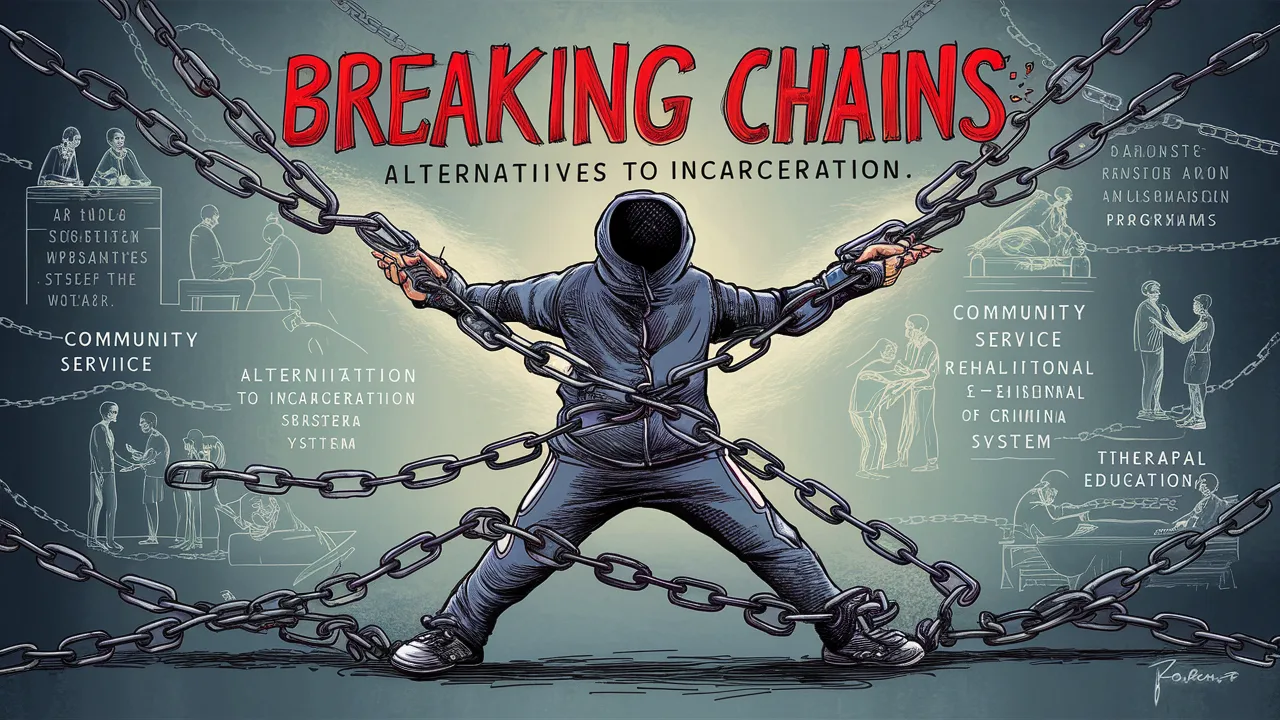Beyond the established systems of capitalism and communism lies a diverse landscape of alternative economic models, each aiming to address the limitations of its predecessors. Let’s explore some prominent options, examining their potential benefits and drawbacks:
1. Democratic Socialism:
- Pros:
- Greater social equality: Public ownership and wealth redistribution aim to reduce income inequality and guarantee access to essential services.
- Economic security: Social safety nets provide a safety cushion during challenging times.
- Balanced approach: Combines markets with public ownership, encouraging social responsibility alongside individual initiative.
- Democratic participation: Worker participation in decision-making fosters a more accountable economic system.
- Cons:
- Potential inefficiency: State-run enterprises might face challenges with efficiency, leading to higher costs or lower service quality.
- Innovation disincentives: The focus on social welfare might discourage private investment and innovation in some sectors.
- Bureaucracy: Large government bureaucracies can be slow and cumbersome, potentially hindering economic dynamism.
- Balancing freedoms: Striking the right balance between individual freedom and social responsibility can be complex.
2. Mutualism:
- Pros:
- Eliminates exploitation: Worker ownership ensures workers receive the full value of their labor, eliminating exploitation by capitalists.
- Social solidarity: Emphasis on cooperation and community fosters a sense of shared responsibility and collective well-being.
- Sustainability focus: De-emphasizing profit and consumption can incentivize more sustainable practices and environmental responsibility.
- Equitable system: The absence of profit and interest promotes a fairer distribution of wealth.
- Cons:
- Scaling challenges: Coordinating large-scale economic activity without centralized control can be difficult.
- Free-riding and coordination: Ensuring everyone contributes fairly and cooperates effectively can be complex in larger communities.
- Balancing autonomy and decision-making: Striking the right balance between individual freedom and collective decision-making within worker-owned businesses can be challenging.
- Addressing externalities: Mutualism needs mechanisms to address externalities (costs borne by society, not individuals) and market failures.

3. Degrowth:
- Pros:
- Environmental focus: Aims to reduce our ecological footprint by addressing climate change, resource depletion, and biodiversity loss.
- Improved quality of life: Shorter workweeks and reduced consumption can lead to more leisure time, stronger social connections, and improved well-being.
- Alternative models: Opens doors to exploring alternative economic systems based on cooperation, sharing, and sufficiency.
- Sustainability focus: Challenges the traditional equation of economic growth with progress, promoting a more sustainable future.
- Cons:
- Economic decline: Transitioning to degrowth might initially lead to economic contraction and reduced access to certain goods and services.
- Resistance from vested interests: Degrowth challenges powerful entities benefiting from the current growth-oriented system.
- Global and equitable degrowth challenges: Implementing degrowth fairly across different countries and social groups can be complex.
- Unclear transition path: The specific mechanisms and pathways for transitioning to a degrowth society are still under debate and development.
4. Hybrid Models:
- Pros:
- Combining strengths: These models borrow successful elements from various economic philosophies, addressing specific challenges with tailored solutions.
- Flexibility and adaptability: They can be customized to individual contexts and needs, allowing for ongoing experimentation and refinement.
- Wider public acceptance: By blending familiar elements with innovative approaches, hybrid models can be more palatable to a broader audience.
- Cons:
- Internal contradictions: Combining different systems can lead to internal tensions and challenges in reconciling their contrasting principles.
- Finding the right balance: Striking the optimal balance between different elements within a hybrid model can be complex and require ongoing adjustments.
- Resistance from established ideologies: Proponents of traditional economic models might resist the challenges posed by hybrid systems.
Choosing the best alternative depends on the specific context and desired outcomes. By understanding the pros and cons of each model, we can engage in informed discussions and work towards building a more just, sustainable, and equitable economic future.I wrote another article about >>>> Nonsocialist alternatives to capitalism that you should read to learn more.
Exploring Alternatives to Capitalism and Communism: A Journey Beyond Traditional Systems.
For over a century, capitalism and communism have dominated the global economic landscape. However, as we grapple with issues like rising inequality, environmental degradation, and social unrest, many are questioning the adequacy of these established systems.
In my 25 years as a researcher and analyst of economic models, I’ve delved into various alternatives that offer promising pathways towards a more just and sustainable future. Let’s embark on a journey to explore these possibilities, delving into their core principles, advantages, and potential drawbacks.
I. Democratic Socialism: A Marriage of Markets and Social Responsibility.
Democratic socialism seeks to bridge the gap between capitalism’s emphasis on individual freedom and communism’s focus on social equality. It envisions a mixed economy where key industries like healthcare, utilities, and transportation are publicly owned and democratically controlled. This ensures that essential services are accessible and affordable for all, while also creating a level playing field for private businesses in other sectors.

Core Principles:
- Public ownership of key industries: Democratic socialism advocates for public ownership of essential services like healthcare, education, and infrastructure. This ensures that these services are not driven by profit motives but by the needs of the community.
- Democratic control and worker participation: Decision-making within publicly owned enterprises is often decentralized, with workers having a say in how their workplaces are run. This fosters a sense of ownership and responsibility among employees.
- Mixed economy: While key industries are publicly owned, democratic socialist systems still allow for a vibrant private sector. This creates a balance between social responsibility and individual initiative.
- Redistribution of wealth: Progressive taxation and social safety nets are used to redistribute wealth more equitably, reducing income inequality and promoting social mobility.
Pros:
- Greater social equality: Public ownership and redistribution of wealth help to reduce income inequality and ensure that everyone has access to basic necessities.
- Economic security: Social safety nets provide a safety cushion for individuals and families during times of hardship.
- Reduced inequality: Progressive taxation helps to level the playing field and prevent the concentration of wealth in the hands of a few.
- Democratic participation: Worker participation in decision-making fosters a more democratic and accountable economic system.
Cons:
- Potential for inefficiency: State-run enterprises can sometimes be less efficient than private businesses, leading to higher costs and lower quality services.
- Disincentives for innovation: The focus on social welfare might discourage private investment and innovation in some sectors.
- Bureaucracy: Large government bureaucracies can be slow and cumbersome, potentially hindering economic dynamism.
- Balancing individual freedoms: Striking the right balance between individual freedom and social responsibility can be challenging.
Democratic socialism presents a compelling alternative by combining the strengths of capitalism and communism. However, navigating the potential pitfalls of inefficiency, and bureaucracy, and balancing individual freedoms remains crucial for its successful implementation.
Stay tuned for the next part of our exploration, where we’ll delve into the unique principles and considerations of Mutualism, Degrowth, and Hybrid Economic Models.
II. Mutualism: Building an Economy on Cooperation and Exchange.
Mutualism, distinct from its namesake communism, envisions a society built on voluntary cooperation, exchange based on mutual consent, and worker ownership. It challenges the traditional notions of profit, interest, and centralized control, aiming for a more equitable and participatory economic system.
Core Principles:
- Voluntary cooperation: Mutualism emphasizes voluntary exchange and association, rejecting coercion and centralized control. Individuals freely choose to participate in economic activities that benefit themselves and the community.
- Worker-owned and democratically controlled businesses: Businesses are owned and operated by the workers themselves, eliminating exploitation and empowering employees to make decisions about their workplaces.
- Labor vouchers as currency: Instead of traditional money, labor vouchers represent units of labor time contributed. This eliminates profit and interest, ensuring fair compensation for work performed.
- Markets facilitated by mutual credit societies: Mutual credit systems provide financing and credit based on trust and reputation, replacing traditional banks and interest-bearing loans.

Pros:
- Eliminates exploitation: Worker ownership and labor vouchers ensure that workers receive the full value of their labor, eliminating exploitation by capitalists.
- Promotes social solidarity: Emphasis on cooperation and community fosters a sense of shared responsibility and collective well-being.
- Encourages sustainable practices: By de-emphasizing profit and material consumption, mutualism can incentivize more sustainable and environmentally responsible production and consumption patterns.
- Creates a more equitable system: The absence of profit and interest способствует более справедливому распределению богатства.
Cons:
- Challenges in scaling up: The complexities of coordinating large-scale economic activity without centralized control can be challenging.
- Potential for free-riding and coordination problems: Ensuring everyone contributes fairly and cooperates effectively can be difficult in larger communities.
- Balancing individual autonomy with collective decision-making: Striking the right balance between individual freedom and collective decision-making within worker-owned businesses can be complex.
- Addressing externalities and market failures: Mutualism needs to develop mechanisms to address externalities (costs borne by society, not individuals) and market failures (situations where markets don’t allocate resources efficiently).
Mutualism offers a radical alternative to traditional economic models, prioritizing cooperation, worker empowerment, and social well-being. However, navigating the challenges of scale, coordination, and addressing market inefficiencies is crucial for its widespread adoption.
In the next section, we’ll explore Degrowth, a thought-provoking approach that challenges the very notion of economic growth as the primary measure of progress.
III. Degrowth: Redefining Progress in a Finite World.
Degrowth stands in stark contrast to traditional economic models that prioritize continuous growth. It proposes a radical shift towards reducing economic output and material consumption, prioritizing ecological sustainability, well-being, and quality of life over endless expansion.
Core Principles:
- Reducing economic output and material consumption: Degrowth advocates for steady-state or even shrinking economies, focusing on sufficiency rather than ever-increasing consumption. This aims to reduce environmental impact and resource depletion.
- Prioritizing ecological sustainability: Degrowth recognizes the ecological limits of the planet and emphasizes living within those limits, protecting biodiversity and natural resources.
- Local economies, shorter workweeks, and resource redistribution: Local production and consumption are encouraged, reducing reliance on globalized supply chains and promoting community resilience. Shorter workweeks and fairer distribution of resources aim to improve quality of life and reduce inequality.
- Shifting focus from material wealth to well-being and sustainability: Degrowth challenges the traditional equation of economic growth with progress, emphasizing alternative measures of well-being such as community, social connection, and environmental health.

Pros:
- Addresses environmental challenges: Degrowth offers a potential solution to climate change, resource depletion, and biodiversity loss by reducing our ecological footprint.
- Improves quality of life: Shorter workweeks and reduced emphasis on material consumption can lead to increased leisure time, stronger social connections, and improved mental and physical well-being.
- Encourages alternative economic models: Degrowth opens doors to exploring alternative economic systems based on cooperation, sharing, and sufficiency.
- Shifts focus to sustainability and well-being: Degrowth challenges the idea of endless growth as the sole measure of progress, promoting a more sustainable and equitable future.
Cons:
- Potential for economic decline and decreased living standards: Transitioning to a degrowth economy might initially lead to economic contraction and reduced access to certain goods and services.
- Resistance from entrenched economic interests: Degrowth challenges powerful vested interests who benefit from the current growth-oriented system.
- Challenges in achieving global and equitable degrowth: Implementing degrowth fairly across different countries and social groups can be complex.
- Unclear path for transitioning to a degrowth society: The specific mechanisms and pathways for transitioning to a degrowth society are still under debate and development.
Degrowth offers a bold vision for a future where we live in harmony with our planet and prioritize well-being over material consumption. However, navigating the potential economic challenges, resistance, and complexities of implementation requires careful consideration and ongoing dialogue.
Stay tuned for the final section, where we’ll explore Hybrid Models that combine elements of different economic systems to create innovative and adaptable solutions.
IV. Hybrid Models: Borrowing Strengths, Building Flexibility.
Beyond these distinct alternatives, a growing movement explores hybrid models. These systems draw elements from various economic philosophies, forging unique solutions tailored to specific contexts and needs.
Examples:
- Social market economies: Combining free markets with social safety nets and government intervention to promote economic stability and social justice. Germany and the Nordic countries are often cited as examples.
- Cooperative commonwealth: This model promotes worker ownership and democratic control of businesses within a mixed economy. The Mondragon Corporation in Spain is a notable example.
- Bhutan’s Gross National Happiness index: This unique approach measures progress based on well-being and sustainability, rather than solely on economic growth.
Pros:
- Combine strengths of different systems: Hybrid models can address specific challenges by incorporating successful elements from various economic philosophies.
- Flexibility and adaptability: They can be tailored to individual contexts and needs, allowing for ongoing experimentation and refinement.
- Potential for wider public acceptance: By blending familiar elements with innovative approaches, hybrid models can be more palatable to a broader audience.
Cons:
- Internal contradictions and conflicting goals: Combining different systems can lead to internal tensions and challenges in reconciling their contrasting principles.
- Finding the right balance: Striking the optimal balance between different elements within a hybrid model can be complex and require ongoing adjustments.
- Resistance from established ideologies: Proponents of traditional economic models might resist the challenges posed by hybrid systems.
Hybrid models offer a promising avenue for exploring tailored solutions that address specific needs and challenges. However, navigating potential contradictions, finding the right balance, and overcoming resistance from established ideologies are crucial considerations for their successful implementation.
Conclusion:
Our exploration of alternatives to capitalism and communism reveals a diverse spectrum of possibilities. Each model presents unique strengths and weaknesses, prompting us to consider what kind of future we want to build.
Whether opting for the democratic principles of socialism, the cooperative spirit of mutualism, the sustainability focus of degrowth, or the adaptability of hybrid models, the key lies in ongoing dialogue, experimentation, and a commitment to creating more just, sustainable, and equitable economic systems for generations to come.
Remember, there is no “one-size-fits-all” solution, and the ideal economic model may vary depending on specific contexts and historical conditions. The important takeaway is that we have the agency to explore alternatives, challenge existing paradigms, and build a future that prioritizes human well-being and ecological sustainability.
I am commitment to crafting compelling narratives and delivering insightful content continues to inspire and inform readers across various platforms. Explore her articles on AlternativesZone.com and FactAfterFact.com to experience a rich tapestry of knowledge and discovery. Here I Analyze and Test the products and services together with my team before we recommend them to our users. Nice Reading Here!








No responses yet